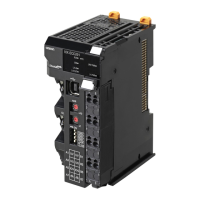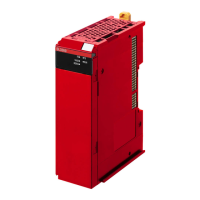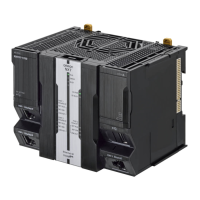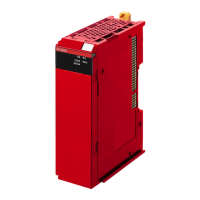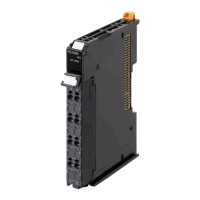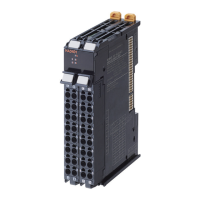Terminology
30
NX-series Position Interface Units User’s Manual (W524)
Terminology
Term Description
axis A functional unit within the Motion Control Function Module. An axis is assigned to
the drive mechanism in an external Servo Drive or the sensing mechanism in an
external Encoder Input Slave Unit.
axis variable A system-defined variable that is defined as a structure and provides status infor-
mation and some of the axis parameters for an individual axis.
DC time EtherCAT slaves that support distributed clock synchronization have a clock that is
shared by all slaves in the network. The time on that clock is called the DC time.
device variable A variable that is used to access a specific device through an I/O port.
I/O refreshing Cyclic data exchange with external devices that is performed with predetermined
memory addresses.
MC Test Run A function to check motor operation and wiring from the Sysmac Studio.
Motion Control Function Module A software component that executes motion control. The Motion Control Function
Module performs motion control based on commands from the motion control
instructions that are executed in the user program. (Abbreviation: MC Function
Module)
motion control parameters Parameters that define the operation of the Motion Control Function Module. The
motion control parameters include the MC common parameters, axis parameters,
and axes group parameters.
NX bus The NX-series internal bus.
PDO communications An acronym for process data communications.
SDO communications One type of EtherCAT communications in which service data objects (SDOs) are
used to transmit information whenever required.
Slave Terminal A terminal that consists of a Communications Coupler Unit after which NX Units
and an End Cover are mounted.
Sync0 A signal that gives the interrupt timing based on the distributed clock (DC) in Ether-
CAT communications. The slaves execute controls according to this interrupt tim-
ing.
time stamping When you obtain position data from an Incremental Encoder Input Unit or SSI data
from an SSI Input Unit and the position data has changed from the previously
obtained position data, you can obtain the time when that change occurred along
with the data. The obtained time data is called a time stamp.
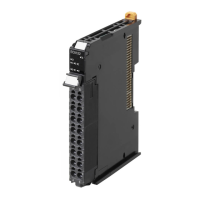
